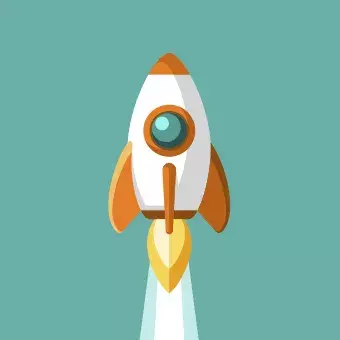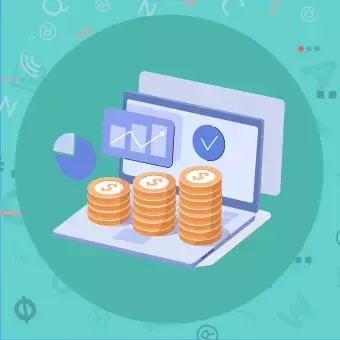Introduction
When paired together Docker and Laravel offer a robust solution. By combining Docker’s containerisation prowess with Laravel’s streamlined web application development, developers can achieve an efficient and seamless workflow. Here’s a guide on how to embark on this journey, topped off with a slice of our own real-world experience.
What is Docker?
Docker is a platform designed to make it easier to create, deploy, and run applications by using containers. These containers allow developers to package an application with all the parts it needs, such as libraries and other dependencies, and ship it as one package.
What is Laravel?
Laravel is a renowned PHP framework, known for its elegant syntax and tools that streamline web application development tasks like routing, authentication, and caching.
Looking for a Laravel Agency?
Benefits of Using Docker with Laravel
Scalability and Flexibility
- Easy Scaling
One of the main advantages of Docker is its ability to scale applications with ease. For Laravel projects, this means that as traffic to a web application grows, Docker containers can be scaled up to handle the additional load. This ensures that Laravel applications remain responsive and performant, even under heavy traffic conditions. - Adaptive Infrastructure
With Docker, you can adapt your infrastructure to changing requirements without any major overhauls. Need to switch to a different version of PHP or a database? Simply modify the Docker configurations without affecting the core Laravel application.
Development Consistency
- Uniform Environments
Docker ensures that Laravel applications are developed, tested, and deployed in identical environments. This consistency mitigates the risk of discrepancies and bugs that often arise due to differences in development settings. - Replicability
If a new developer joins the team or if you need to replicate the development environment on a different machine, Docker makes it straightforward. The developer can simply pull the Docker image and have the Laravel application up and running in no time, ensuring seamless onboarding and development continuation.
Enhanced Collaboration Among Developers
- Shareable Workspaces
Docker containers can be easily shared among team members. This is especially beneficial when working on complex Laravel features that need collaboration. Developers can share their containers, ensuring that everyone has access to the latest version of the application in a consistent environment. - Version Control for Environments
Just as code is version-controlled, Docker allows for version control of the environment. If a particular configuration worked well with a past Laravel project, it can be reused with confidence for future projects.
Streamlined Deployment and CI/CD Integration:
- Continuous Integration/Continuous Deployment (CI/CD)
Docker integrates seamlessly with popular CI/CD tools. For Laravel projects, this means that once code is pushed to a repository, it can be automatically tested in a Docker container and, if it passes, deployed to production. This streamlines the deployment pipeline and ensures that code is always tested in a consistent environment before going live. - Consistent Deployments
With Docker, what you test is what you deploy. Since the Laravel application is containerised, there’s confidence that the deployment will run exactly as it did during testing, reducing deployment-related issues.
Security and Isolation:
- Secure Boundaries
Each Docker container runs in its isolated environment. For Laravel applications, this means that any security vulnerabilities are confined to that container and don’t compromise the broader system. - Dependency Management
Docker allows Laravel developers to specify and lock in specific versions of dependencies. This not only ensures consistency but also adds a layer of security by using known, vetted versions of libraries and tools.
Setting up Docker for Laravel
Prerequisites
- Docker Installation: Ensure Docker is installed on your machine. If not, you can download it from the official Docker website.
- Knowledge Base: Familiarity with the basics of Laravel and PHP will be beneficial.
- Laravel Project: You should have an existing Laravel project or be ready to create one.
1. Navigate to Your Laravel Project Directory
- Begin by navigating to your Laravel project’s root directory using the command line or terminal.
2. Set Up a Dockerfile
- Create a file named Dockerfile in your project root. This will define the environment for your Laravel application.
- Start by specifying a base image, such as
php:7.4-fpmfor PHP. - Add commands to install necessary extensions, dependencies, and set up configurations.
3. Docker Compose Configuration
- Create a
docker-compose.ymlfile in the project root. Docker Compose helps manage multi-container Docker applications. - Define services like web, app, and db for the web server (e.g., Nginx), PHP, and database (e.g., MySQL) respectively.
- For each service, specify the Docker image, ports, volumes, and any dependencies.
4. Run the Docker Containers
- Use the command
docker-compose up -dto start the containers. The-dflag runs them in detached mode, allowing you to continue using the terminal.
5. Integrate Laravel with Docker
- Adjust Laravel’s .env file to use the database service defined in
docker-compose.yml(typically named db). - If using queues or caching in Laravel, ensure that they are correctly configured to work within the Docker environment.
6. Testing and Syncing
- Access your Laravel application via a browser, using the IP address of the Docker container (often localhost if running locally) and the port specified in
docker-compose.yml - Ensure that all functionalities work correctly, including database operations, caching, and queues.
Additional Tips
- Persistent Data: If you want your database data to persist across Docker sessions, use Docker volumes. This ensures that even if you bring down your Docker containers, your data remains intact.
- Optimisation: Over time, as you get more familiar with Docker, you can optimise your Dockerfile and
docker-compose.ymlfiles by reducing build times, improving container performance, and ensuring security.
By following these steps, you’ll have a Dockerised Laravel application, ready for consistent development, testing, and deployment. This setup not only streamlines the development process but also ensures that your application runs consistently across different environments.


